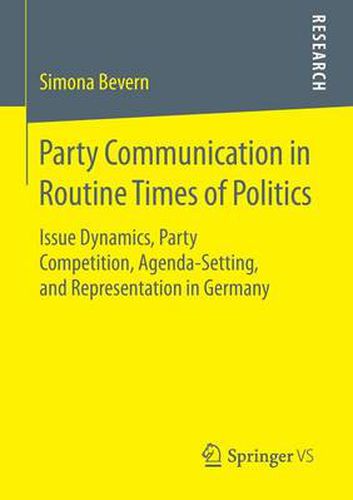Readings Newsletter
Become a Readings Member to make your shopping experience even easier.
Sign in or sign up for free!
You’re not far away from qualifying for FREE standard shipping within Australia
You’ve qualified for FREE standard shipping within Australia
The cart is loading…






This title is printed to order. This book may have been self-published. If so, we cannot guarantee the quality of the content. In the main most books will have gone through the editing process however some may not. We therefore suggest that you be aware of this before ordering this book. If in doubt check either the author or publisher’s details as we are unable to accept any returns unless they are faulty. Please contact us if you have any questions.
Simona Bevern addresses the questions what and why political parties communicate in the time between elections, focusing on the dynamic rise and fall of policy issues. Despite the central role of political parties and the alleged importance of communication, only few scholars have taken a closer look at the content and dynamics of parties’ communication in routine times of politics. In this study, interactions between parties’ communication, their party competitors, the legislative agenda and public opinion are studied in Germany for the years 2004-2009, making use of a novel data set and quantitative methods.
$9.00 standard shipping within Australia
FREE standard shipping within Australia for orders over $100.00
Express & International shipping calculated at checkout
This title is printed to order. This book may have been self-published. If so, we cannot guarantee the quality of the content. In the main most books will have gone through the editing process however some may not. We therefore suggest that you be aware of this before ordering this book. If in doubt check either the author or publisher’s details as we are unable to accept any returns unless they are faulty. Please contact us if you have any questions.
Simona Bevern addresses the questions what and why political parties communicate in the time between elections, focusing on the dynamic rise and fall of policy issues. Despite the central role of political parties and the alleged importance of communication, only few scholars have taken a closer look at the content and dynamics of parties’ communication in routine times of politics. In this study, interactions between parties’ communication, their party competitors, the legislative agenda and public opinion are studied in Germany for the years 2004-2009, making use of a novel data set and quantitative methods.